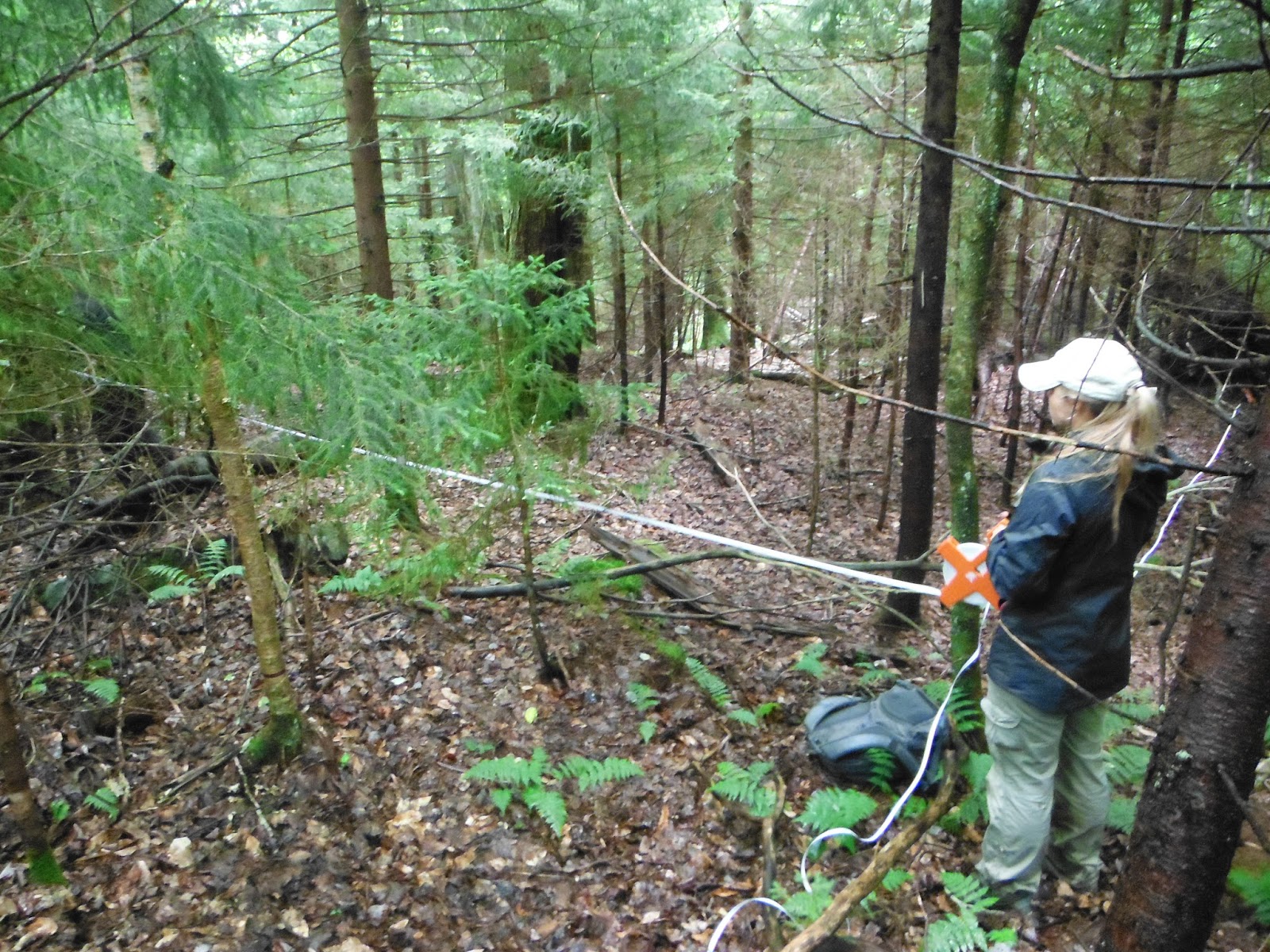Today started off very early, well, very early to me...I had to be at the office by 7:30am because today I went out with Stephanie and Sarah from Purdue University.
Stephanie, a Graduate student, and her technician Sarah, are collecting vegetation samples to help better understand what the flying squirrels are eating. They have predetermined, but randomly selected points all over the Monongahela Forest in which they set up vegetation plots. To setup these plots they go to the center point and lay out measuring tape 10m long going north, south, and another tape 10m long going east, west. Once the tape is laid out they then place pitfall traps every 5m in randomly chosen directions, and then one in the center. After placing the traps, they go back in 4 days to see if they captured any insects.
Pitfall traps are designed to catch insects on the forest floor. Basically you dig a hole the depth of a plastic cup, and then place the cup inside the hole. Then you place a plate over the top to prevent the cup from flooding if it rains. The insects then fall into the cup while walking across the forest floor.
We were also collecting vegetation samples, about 10 pieces each, of things such as spruce sprigs, yellow birch and maple buds, ferns, mosses, lichens, mushrooms, spruce cones, and hemlock cones. All of these samples, insects included, are then frozen until they return to Purdue University. At Purdue they will then crush up the samples to analyze the isotopes to compare with the isotopes in the hair samples that I collect and mail to them. When they compare the results they are then able to see what percent of the vegetation or insects are in the squirrels diet! Neat, huh? So basically they will be able to say "Oh, this squirrel has a diet of 60% mushrooms, 20% mosses, 10% ferns, and 10% spruce cones". Something along those lines.
They also have these very expensive (about $3,000 each) meters, which the name of them has escaped me, that can measure the amount of light that comes through the forest canopy so then they can determine the percent of canopy cover! The only downfall to these meters is that the only work when the sun is brightly shining. So if it is a cloudy day they will have to go back to the area to try to capture that data.
All-in-all it was a great day! It was really nice to see the work that they are doing especially since I send them the hair samples that I collect. Steph has offered me the chance to go out with them again, but to a closer location. Yesterday we drove down to Pocahontas County for the data collection making it about a 160 mile round-trip day!
Covered pitfall trap
The pitfall trap
Steph investigating a pitfall trap to see if there are any insects
Hiking in to the next pitfall trap site
The 2nd pitfall trap site
Steph and Sarah setting up a new pitfall trap plot
Sarah holding the measuring tape while Steph measure it out
Setting up those fancy sunlight meters
Sarah holding the meter while it measures the amount of sunlight









No comments:
Post a Comment